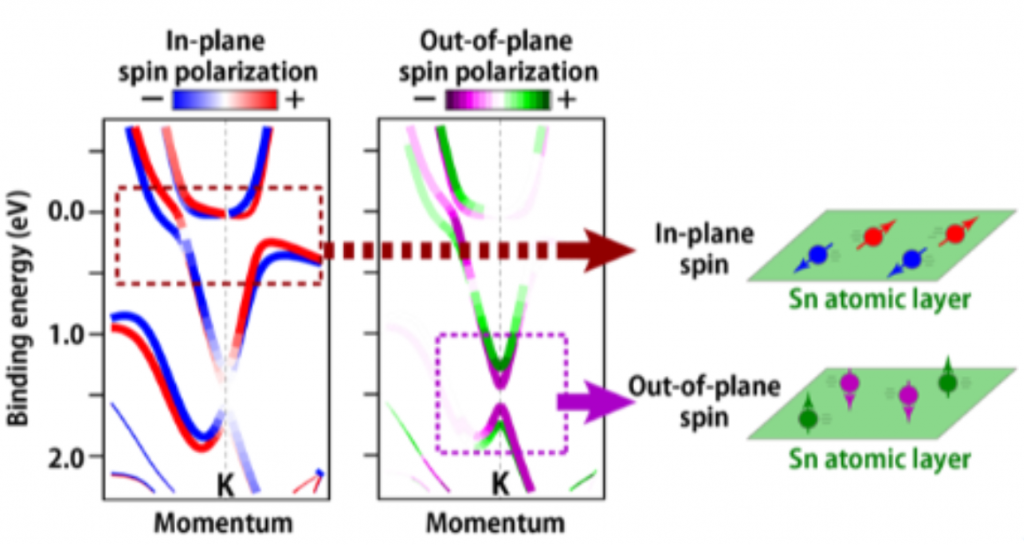Material for spintronics workable in the air, thanks to discovery of new function by tin monoatomic layer covered with graphene
The research group has found the surface material could work in the air although such materials are usually workable only in the vacuum environment. The tin (Sn) monoatomic layer covered with graphene shows its potential as a practical spintronics material because it does not impair its function even in the air. This substance also plays important function in conducting spin-polarized electrons. The result was made it possible by Research Associate Koichiro Yaji and Professor Fumio Komori of the Institute for Solid State Physics at the University of Tokyo, and Research Associate Anton Visikovskiy and Professor Satoru Tanaka of the Graduate School of Engineering at Kyushu University.

In recent years, spin-polarized electronic states on solid surfaces have been studied actively because of their potential for future spintronic technology. Usually spin-polarized electronic states at the surface are easily broken in the air by reactions with oxygen and that function is lost.
Therefore, surface materials are required to deal with only in the vacuum environment and this is the most challenging part for spintronics to put into practical use, as it needs to take them out into the air while keeping their performance and operation stable.
The research group also revealed there are two types of large spin-polarized electronic states in the graphene-covered Sn monoatomic layer in the air. Besides, they discovered electrons with spins lying in the in-plane direction of the atomic film and the electrons with spins in the perpendicular direction coexisted depending on the energy of the electrons. From all these, three-dimensional spin control of electrons becomes possible if these functions are selectively used.
By making use of graphene as a protective film, functions of spin-polarized electronic materials that were only handled in the vacuum environment are now able to retain its function in the air, which achievement will consequently lead to a major step forward in the development of practical spintronics materials.
The research paper was published on March 29, 2019 (U.S. Eastern Time) in the U.S. science journal Physical Review Letters online.
Reference:
- Journal: Physical Review Letters
- Title: Coexistence of two types of spin splitting originating from different symmetries
- Authors: Koichiro Yaji*, Anton Visikovskiy, Takushi Iimori, Kenta Kuroda, Shingo Hayashi, Takashi Kajiwara, Satoru Tanaka, Fumio Komori*, Shik Shin
- DOI:https://doi.org/10.1103/PhysRevLett.122.126403
